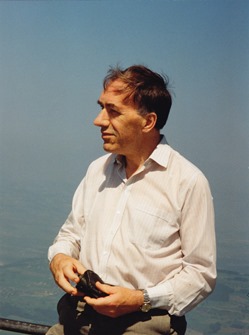
Complete field geologist who combined deep knowledge and rigour with energy and endurance.
Robin Nicholson was the complete field geologist. In his field-based research he combined deep knowledge and scientific rigour with energy, physical endurance and persistence. He will be remembered particularly for his major and lasting contributions to our understanding of the geology of the Scandinavian Caledonides. He also carried out significant research elsewhere in Europe and in East Africa.
Robin was brought up in Berwick upon Tweed. In 1950 he gained a place at Hull University to read geography, which he did not enjoy and so left to do his National Service. In the RAF he revelled in the challenges of flying, training with the RCAF in Gimli, Manitoba.
On his return to civilian life he applied to read geology at University College, London in the small department led by Professor S E Hollingworth. He graduated in 1956, winning the Sir Henry Mier’s prize. He and Brian Walton then joined Professor Hollingworth’s research group in Nordland, Norway, extending the work of Roye Rutland and Keith Ackerman to the critical Glomfjord area (immediately NE of the Svartisen permanent ice cap). His PhD was a landmark study of an area which at that time was accessible only on foot. Fieldwork was demanding in difficult mountainous terrain with variable weather, deepening his respect for the pioneers of Nordland geology.
In 1957 Robin was appointed assistant lecturer at Bedford College where he completed his PhD. Here he met Judy whom he married in 1961. In 1960 Robin moved to Professor Deer’s department at Manchester University. He and his own PhD students maintained the connection with the UCL group, and he effectively became the leader of the expanding UK effort in Nordland from the mid 1960s. Robin helped to found the Tectonic Studies Group (TSG) of the Geological Society in 1970, and was an early member of the History of Geology Group (HOGG). He was also an active participant in the Geologists' Association.
In the 1970s, Robin's research extended eastwards into Sweden, in order to tackle the wider problems of nappe relationships. Links with Sweden were strengthened through Mike Wilson, his graduate student, sadly killed in Nicaragua. Robin’s research not only applied the developing techniques of structural geology in the field but also modern geochemical and geochronological techniques to the elucidation of tectonic relationships. These resulted in important reviews of Caledonian geology, in1974 and 1979.
In spite of accelerating health problems and decreasing mobility which brought his Norwegian research to an untimely end, Robin persisted with less demanding fieldwork, focusing on the mechanics of small-scale structures. The formation and propagation of veins and dykes remained a passionate interest until the end of his life.
Robin officially retired in 1994, and in 1999 he and Judy moved to Berwick upon Tweed where he greatly enjoyed visits from his three grand daughters and many former colleagues and friends. He died from pneumonia on 30 March 2015 and is survived by Judy, his wife of 54 years, son Hugh and daughter Sally.
H & JA Nicholson, R Rutland, S & J Treagus